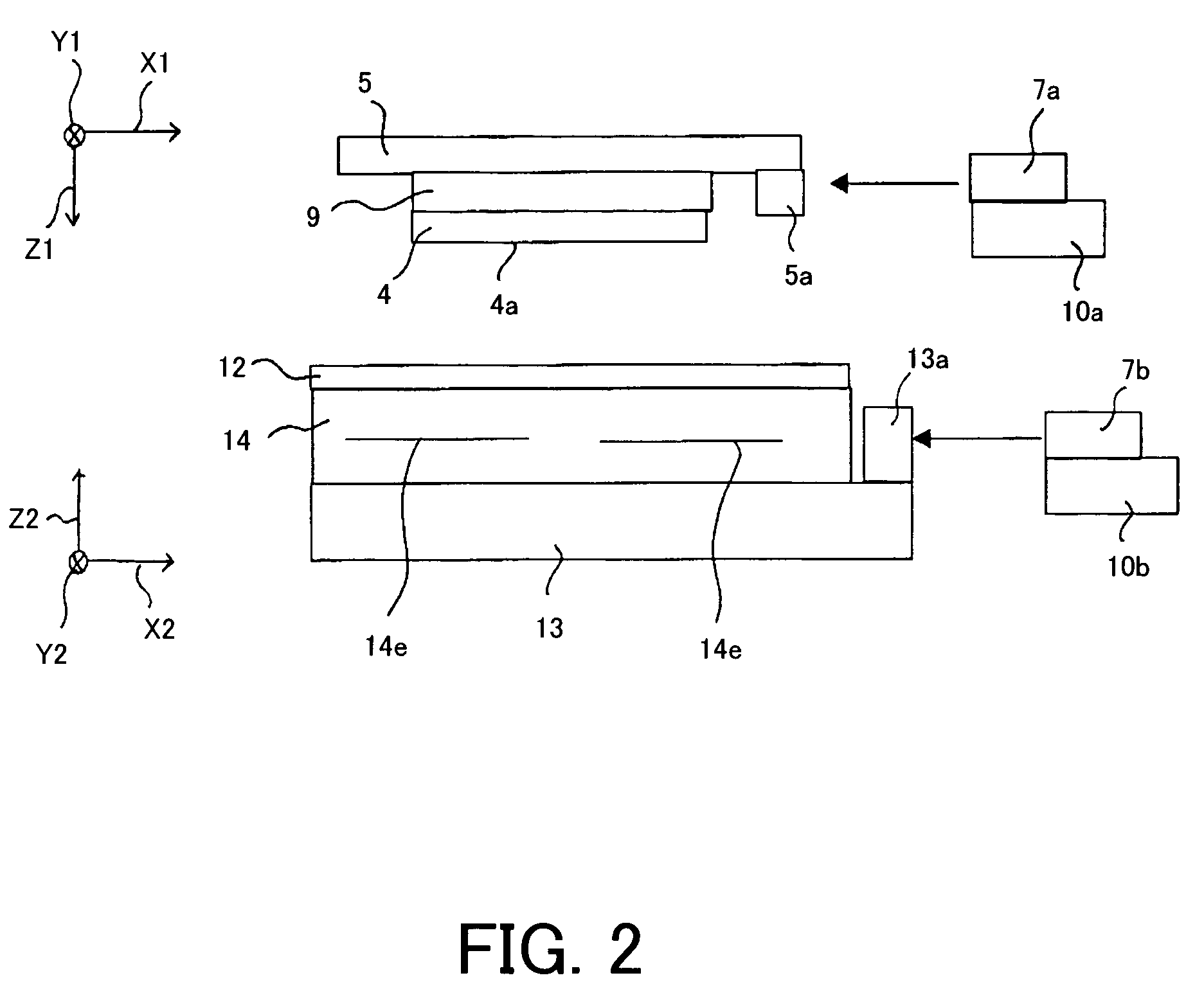Exposure apparatus
a technology of exposure apparatus and chuck, which is applied in the field of exposure apparatus, can solve the problems of reducing the reflectance of euv light, temperature rise in the chuck, and the device such as the reticle or the wafer cannot be flat, and achieves excellent throughput and optical performance, reduce the fraction of defective wafers, and poor response to position control
- Summary
- Abstract
- Description
- Claims
- Application Information
AI Technical Summary
Benefits of technology
Problems solved by technology
Method used
Image
Examples
first embodiment
[0040][The First Embodiment]
[0041]Referring now to the accompanying drawings, a description will now be given of an exposure apparatus of the first embodiment according to the present invention. FIG. 1 is a schematic structure of the whole exposure portion in an exposure apparatus 1 of the first embodiment according to the present invention. The exposure apparatus 1 is a scanning type reduction projection exposure apparatus using EUV light 2e as exposure light. It includes an EUV light source 2 for emitting EUV light 2e, an illumination system 3, a reflection reticle as an object (hereinafter “reticle”) 4, a reticle stage 5, a projection optical system 6, a laser interferometer for the reticle 7a and for the wafer 7b as a position measuring device (see FIG. 2), an alignment detector 15, a focus position detector 16, and a vacuum system 17.
[0042]The EUV light source uses, for example, a laser plasma light source 2a. The laser plasma light source 2a has a pulse laser 2b for excitation...
second embodiment
[0076][The Second Embodiment]
[0077]Referring now to FIG. 6, a description will now be given of an exposure apparatus of the second embodiment according to the present invention. FIG. 6 is an enlarged view around the wafer 12 and a wafer chuck 14 in an exposure apparatus 1 of the second embodiment. The same structure described in the first embodiment is designated by the same reference numeral, and a description will be omitted.
[0078]A temperature controller 18 for the substrate controls the temperature of the refrigerator 11a used to control the temperature of the wafer 12. A non-contact type radiation heat transfer sensor (a first sensor) 19 connects to the temperature controller 18 for the substrate. The radiation heat transfer sensor 19 detects the surface temperature of the wafer 12 without contacting it, while the temperature controller 18 for the substrate maintains the temperature of the wafer 12 at 23 degree centigrade by adjusting the applied voltage to the Peltier device 1...
PUM
| Property | Measurement | Unit |
|---|---|---|
| wavelengths | aaaaa | aaaaa |
| air pressure | aaaaa | aaaaa |
| air pressure | aaaaa | aaaaa |
Abstract
Description
Claims
Application Information
 Login to View More
Login to View More - R&D
- Intellectual Property
- Life Sciences
- Materials
- Tech Scout
- Unparalleled Data Quality
- Higher Quality Content
- 60% Fewer Hallucinations
Browse by: Latest US Patents, China's latest patents, Technical Efficacy Thesaurus, Application Domain, Technology Topic, Popular Technical Reports.
© 2025 PatSnap. All rights reserved.Legal|Privacy policy|Modern Slavery Act Transparency Statement|Sitemap|About US| Contact US: help@patsnap.com



